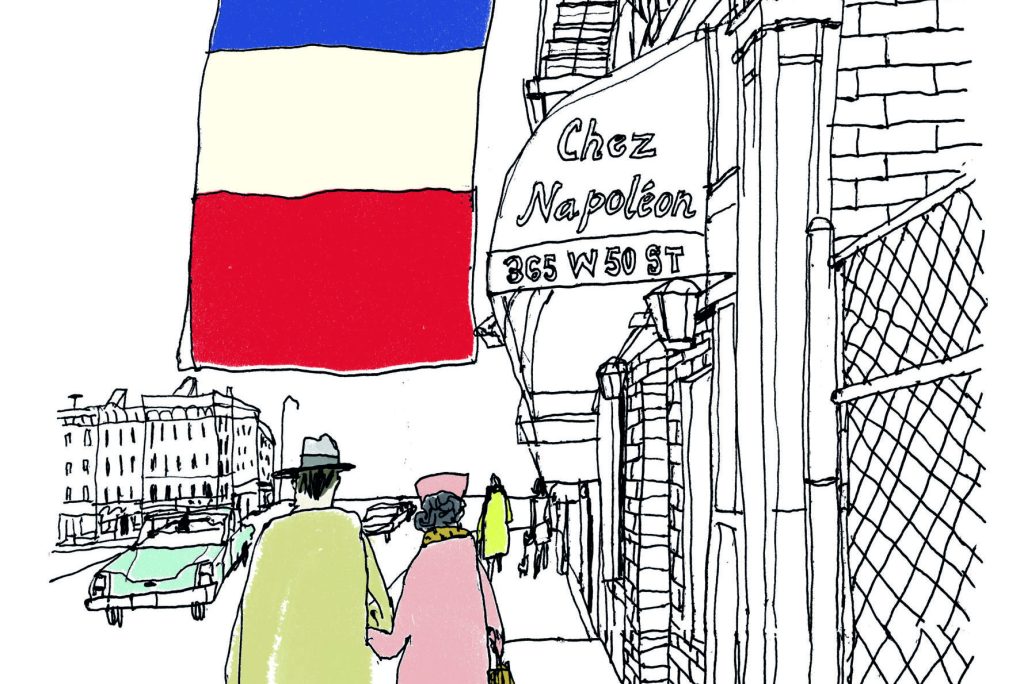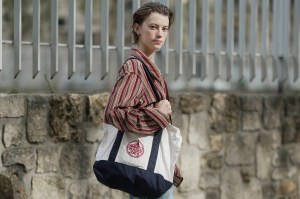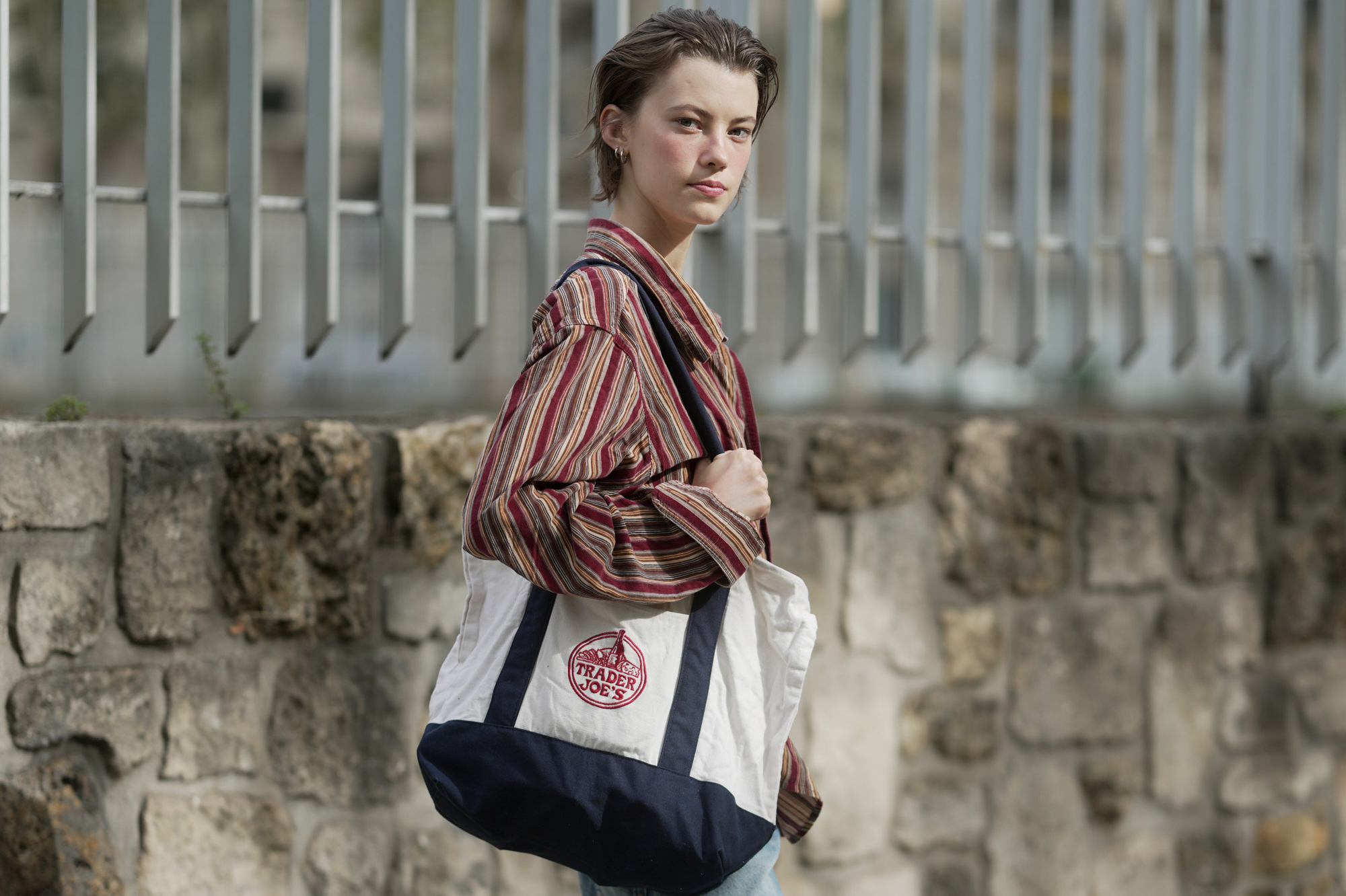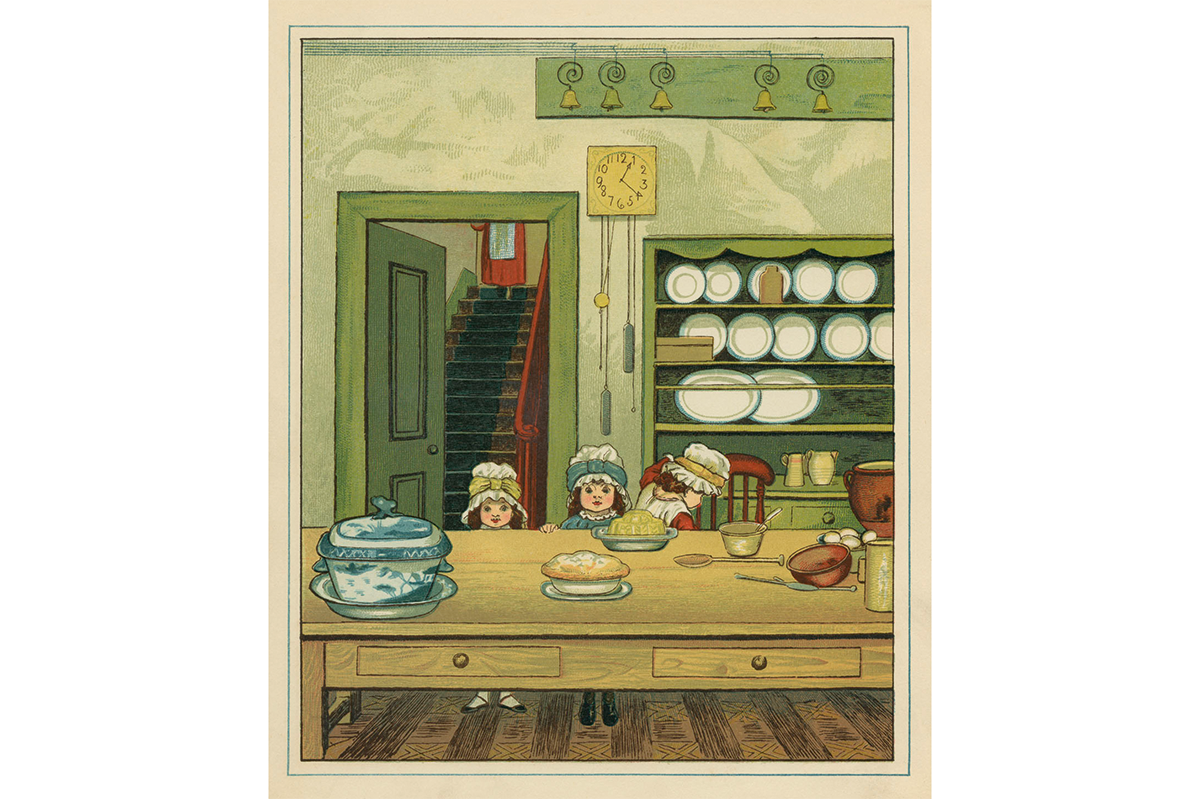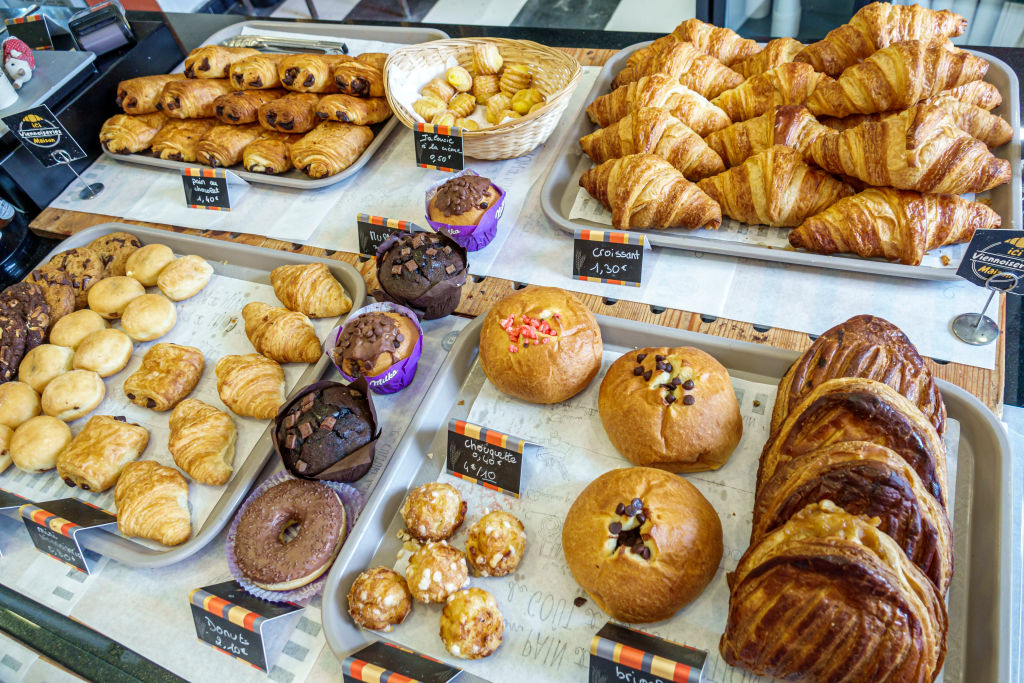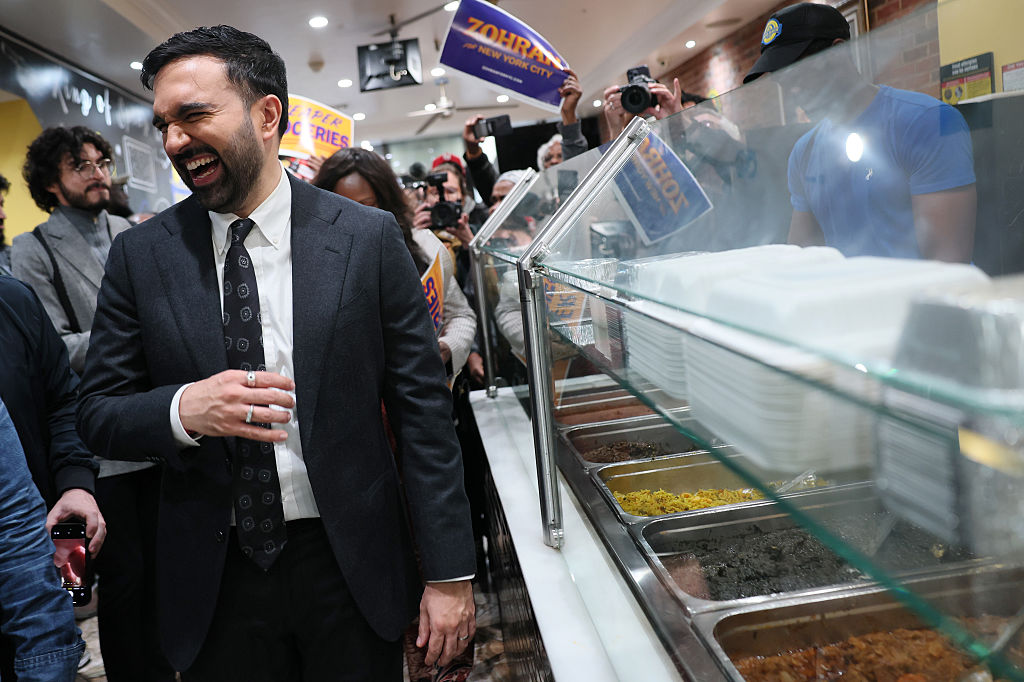Readers of a certain vintage will recall when any listing of fancy restaurants in a big city had a heavy French accent. Look at the ‘Let’s Eat Out’ section at the back of an old issue of Gourmet magazine from the 1970s for the evidence, at least for New York but, if memory serves, it was true for London as well. (The Italians probably ran second, then the Chinese, then a big falloff to other countries but still mostly European ones.)
The way it worked at Gourmet — you got a listing if you bought an ad — only understated things. Lots of good places never advertised at all or simply did not aspire to the tony status that association with the likes of Gourmet conferred. Names like Le Chamberlin, La Caravelle, Le Chantilly, Mon Paris, announced their sole culinary allegiance. Most are now gone, and with them these cities have lost a certain element of class. The white tablecloths, well-dressed and trained waiters, properly set and decently spaced tables that characterized these amiable unpretentious establishments could not survive more casual times and tastes. Two of the three described below are gone too, but not forgotten.
Once upon a time, a plain French name alone sufficed to explain the business. Nowadays likely as not it would have to be joined to a cutesy ‘A Little French Restaurant’ (or ‘bistro’ on the thought that more casual equals more welcoming: come as you are). Signage aside, one of the signals then or now that you were on to the real thing was not posh location. These tended to be small establishments with narrow frontages, as modest in overall footprint as they were capacious in what came out of their kitchens. In 1960s and early Seventies London, Marylebone Lane off Wigmore Street still retained the unglamorous hugger-mugger character it had in Victorian times, though gentrification was around the corner. Le P’tit Montmartre opened there, at numbers 15-17, in 1956 with a manager who had worked under Escoffier at the Savoy.
Your evening began over aperitif or cocktail, when waiters presented a menu of classic proportion and content faithful to the great French master. It was dark blue, heavy card-stock with red script and tape binding: a 9’x13’ folio you had to open and then hold with two hands. Escoffier’s famous aphorism — ‘La bonne cuisine est la base du véritable bonheur’ — printed boldly on the cover, left no doubt about what to expect on the inside. In macaronic Franglais, the verso page bid choice from the once-familiar categories: Hors d’oeuvres, Potages & Oeufs, Poissons, Entrées and Flambées Du Maître. The recto carried on through Grillades au ‘Chargrill,’ Legumes, Desserts and Savouries. A small insert noted Les Suggestions de la Semaine. Though hardly anyone any more worked through all seven courses, everyone was sure to find — from among the 70 dishes on offer — something to fancy. My selection might run to escargots de bourgogne, tournedos Rossini or sole meunière, pommes Lyonnaise, haricots verts, salade, finished with crêpes suzette and fromage de France au choix. Everything was à la carte, and in those far-off days the foie gras de Strasbourg topped the list at £1.50.
The prices alone, alas, are not all that has changed. Should you go to numbers 15-17 Marylebone Lane today, you will find a redeveloped site occupied by an establishment named 28°-50° Wine Workshop and Kitchen, which offers, according to Twitter, ‘a great dining experience.’ Le P’tit Montmartre, now long expired, did not offer a dining experience. It offered dinner.
Across the pond, the corner of 28th Street and Lexington Avenue in Manhattan is no fancy neighborhood either. Nor was it in 1977 when two Frenchmen from Brittany, Marcel Guélaff and Raymond Auffret, opened up shop at La Petite Auberge, another genteel, old-school establishment that would serve New York faithfully for 34 years. Approaching from the north, you first saw a small market at the very corner with a sidewalk burst of fresh flowers, an almost Parisian introduction. La Petite Auberge advertised a kitchen open until 11 p.m., and in this and all other particulars it was what it claimed to be. Twenty or so years back, I tested this one exceptionally frigid night after attending an off-Broadway show nearby and arrived at 10:55. Marcel came from behind the small bar at the front to hang my coat and seat me at a white-clothed two-top in the low-ceilinged, dark-paneled dining room just beyond. Jacketed waiter remained on duty, chef at the ready. After a whiskey to defrost and with quiet aplomb, they served up a lobster bisque, lamb chops, a gentle salad, a half bottle of claret and then left me to my supper and playbill. I was not quite the last to leave. In the quiet late of an evening, such a place is one of the treasures of city life. La Petite Auberge did not play music, and the staff, ever discreetly at hand, never bothered you with their Christian names.
The quality that a meal at La Petite Auberge always brought to mind (the quality of the food could be assumed) was competence. A word or two here about the twin components of the restaurant business: cooking and service. Everything begins in the kitchen and, I suppose, ends there. But service is not just the work waiters do in getting what’s cooked in the kitchen in front of the customer. The whole thing is a service; it is the purpose of the whole show. It is like the performing arts — real actors and musicians will tell you that it doesn’t happen in rehearsal or the practice room. It happens when an audience is there to receive it. Sure, they will have bought tickets and expect value for money, and restaurants obviously are businesses too and fragile ones at that. At one level, what occurs there is transactional. But at restaurants of a certain order what happens is not merely transactional. I believe this can be observed best in small, tightly held, owners-on-the-floor places like these. Though these examples happen to be French, nationality has little to do with it. Unfailing attentiveness to one’s fellows has everything to do with it.
Moreover, because food and eating are not extras in our lives but essentials, restaurateurs, again those of a certain order, carry a responsibility that, say, operators of theme parks do not. You don’t learn this from books or in cooking school. It does not involve a credential but an education on the ground. In the 1960s, both Auffret and Guélaff got theirs at another neighborhood restaurant, Au Petit Paris, where they got to know everyone: staff, customers, neighbors, competitors, inspectors, cops. Auffret’s mother worked there and his sister too. When at last they got their own place, they resolved it would maintain classic traditional French food, pointe finale. Nothing nouvelle or ‘fusion,’ and there never was. Their menu did not change for 35 years. That you could, any night, savor that same famous soufflé was, they were certain, what kept people coming back.
It was a sad day when La Petite Auberge passed from the scene a decade ago. It did so not, however, because of changing fashion or even high rents but because its founders and owners, who were getting older, just decided it was time to go. Nothing lasts forever. Maybe they thought nobody else could do it as well. They’d had a good run. It was an honorable choice. An Indian restaurant fills the spot today, joining a passel of other Asian eateries nearby (so much for neighborhood diversity). Long live their memory.
Thirty-some blocks uptown, in the old Hell’s Kitchen neighborhood, we come to the survivor of this trio. Chez Napoléon opened in 1960, a time when the piers on the Hudson just to the west were still thick with transatlantic shipping and liners, not a few of them French. Since then only three families have been in charge. The family Bruno, current propriétaires, have served the longest, since 1982. On the edge of the theater district, it is a favorite with playgoers, though for serious diners the performance right at 365 West 50th is gracious plenty for an evening. They can indeed have you out the door by curtain time; on the other hand, you will never be rushed if the play’s not the thing. The place is tiny, with two- and four-top tables seating little more than 30. A tinier bar at the back of the entrance room seats one. Yes: one.
The Brunos have an interesting story from which flows the whole character of the place. Marguerite Bruno, chef grandmère, long ruled the tiny kitchen and then, after the dinner rush, could usually be found at the solitary bar stool sipping a Dewar’s poured by grandson William Welles, now co-owner with Marguerite’s daughter Elyane. Marguerite’s affection for America dated to the closing days of World War Two. As a young girl hiding from retreating German patrols, in a cellar with her future husband Alfred and a French family of eight, Marguerite dashed across the village square to corral a wandering cow to get milk for the children. As planes roared overhead and menacing footsteps were heard above the cellar door, she feared the worst, but when the door opened it was not a German but an American who greeted her. The planes were American too: they had been preparing to carpetbomb the village for German holdouts, until a pilot spied a young woman running across after the cow and aborted the mission. A surviving photograph, taken soon afterward, shows Marguerite, the French family and the GIs posed happily at the back of an American army truck. All sport big smiles. The caption reads: ‘1944, America Liberates France — We did not forget.’ She and Alfred married in 1945 and for a number of years ran, but never owned, a small hotel in Auron in the French Alps. Then, in 1974, they followed through on wartime memory, immigrating to America, becoming citizens and eight years later settling into the kitchen at 365 West 50th Street.
The 1944 photo was reproduced, postcard-sized, during the crisis in Franco-American relations at the time of the American invasion of Iraq, when things got touchy for French restaurants in New York. The Brunos used their history to push back: ‘In this day and age when it is quite easy to mock the French for being cowards, snobs and ungrateful toward America since World War Two, we would like to point out that Marguerite’s story is only one of countless untold stories of bravery, resistance and thankfulness during some of Europe’s darkest years.’
All that was a decade and a half ago. Today, with Elyane and William in charge, Chez Napoléon, like its feisty namesake, soldiers on. The door with the diamond-shaped window and awning overhung by an ancient iron fire escape is now open again after the virus panic, the lockdowns and all the mayhem of the past year. When theaters light up this fall, the plan is to be at full steam. This means that any day but Monday, you can once again anticipate tucking in to canard à l’orange or steak au poivre, or cassoulet on a cold night, or lapin ‘Marguerite’ on any night. Thirty-nine dollars buys a respectable Côtes du Rhone or Sauvignon Blanc. Could anything be finer? I prefer waiting for the show-crowd to move on, and then relaxing to a little Edith Piaf, the murals and bric-a-brac looking down from the walls and all the warmth that the Brunos and their staff have to give.
Dining — no need ever to append a silly ‘fine’ to it — as opposed to eating can occur in a good restaurant or a gracious home. When it does, the guests at table nourish body and soul together. Something is given, something received, and we are filled, irrespective of whether a literal bill comes at the end. At home or ‘out,’ dining depends on a delicate ecology: kitchen, service, guests of the right sort. The restaurants of this little trio had and still have that touch. Here’s to the French — and to anyone else brave and steadfast enough to sustain it.
This article was originally published in The Spectator’s September 2021 World edition.



